- Chandra Orrill
- https://chandraorrill.sites.umassd.edu
- Professor
- Computational Thinking Counts in Elementary Grades: Powerful STEM Teaching and Learning for the 21st Century
- https://ctcounts.sites.umassd.edu
- University of Massachusetts Dartmouth
- Ramprasad Balasubramanian
- Associate Provost
- Computational Thinking Counts in Elementary Grades: Powerful STEM Teaching and Learning for the 21st Century
- https://ctcounts.sites.umassd.edu
- University of Massachusetts Dartmouth
- Zarina Gearty
- PhD student
- Computational Thinking Counts in Elementary Grades: Powerful STEM Teaching and Learning for the 21st Century
- https://ctcounts.sites.umassd.edu
- University of Massachusetts Dartmouth
- Shakhnoza Kayumova
- https://www.steamidentity.com
- Associate Professor
- Computational Thinking Counts in Elementary Grades: Powerful STEM Teaching and Learning for the 21st Century
- https://ctcounts.sites.umassd.edu
- University of Massachusetts Dartmouth
- Zhichun Liu
- Postdoctoral Fellow
- Computational Thinking Counts in Elementary Grades: Powerful STEM Teaching and Learning for the 21st Century
- https://ctcounts.sites.umassd.edu
- University of Massachusetts Dartmouth
- Eleanor Richard
- Doctoral Student
- Computational Thinking Counts in Elementary Grades: Powerful STEM Teaching and Learning for the 21st Century
- https://ctcounts.sites.umassd.edu
- University of Massachusetts Dartmouth
Public Discussion
Continue the discussion of this presentation on the Multiplex. Go to Multiplex






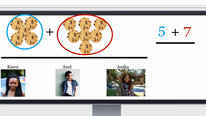
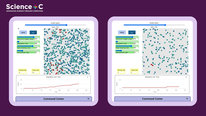
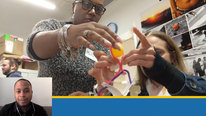
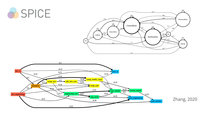
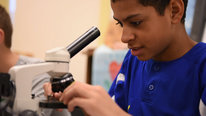
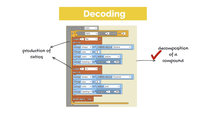
Catherine McCulloch
Senior Project Director
Chandra and team, thank you for sharing your work. I was intrigued by the text on the side in which you state that you “highlight ways to recognize a wide variety of student thinking strategies, particularly when student thinking is not verbal.” How do help teachers recognize non-verbal thinking strategies?
Shakhnoza Kayumova
Associate Professor
Dear Catherine,
We are planning to identify some of those with the partner teachers and CS researchers during our classroom video data collection. We are at the initial PD stage and planning to go into classrooms this Fall.
Thank you for visiting and asking this important question!
Shakhnoza
Jaime Gutierrez
Research Associate II
Hi Chandra and team, very interesting work! The robots look like an engaging and fun addition to classroom activities. I'm curious what you've learned about how teachers think about CT? How do they describe it? My org does research with parents around thinking about CT and although those are two very distinct groups, when we present CT, as you did here, as a set of competencies most parents say, yes, problem-solving, analytical thinking, etc is important but the next question is always how is CT different? How do teachers see it fitting into their classroom and curriculum? I'm sure the team did a lot of thinking about this but you mentioned that CT is typically thought about as coding or technology based experiences/activities, how is the team dealing with that tension when the culminating work seems to involve coding and a robot?
I'm also really curious about "sensitizing teachers to noticing in their classrooms." I know you're still looking into this but is there an example of how this might play out in your mind?
So many interesting questions! Thanks for sharing!
Chandra Orrill
Professor
Hi Jaime,
Thank you for your interest in our work. We are still in the planning phases of this work because of the delays caused by COVID. But, we have had some opportunity to work with teachers. In that work, we brought in activities that use CT, but are not computer/robot-based. So, for example, we had them write the steps out to a dance that we could all follow. Then, we talk about how that is an example of CT.
As for fitting in the curriculum, that's the challenge we're very excited to tackle. What we plan to do as first steps is introduce ways in which Photon can be used to address science and math content standards that have to be addressed anyway. In that way, the teachers learn more about the robot and coding at the same time as they are thinking about integration. One of our big goals is to have the teachers co-design CT-rich math and/or science lessons with us that we will then be able to help them implement.
For noticing, we are planning to return to the roots of noticing in some ways by building a video club and having teachers share their videos as they implement CT lessons in their math/science classroom. By having them watch their (and their peers') classrooms with video prompts about what are students learning and how do we know, we hope to influence that kinds of things they are paying attention to with their students.
Aditi Wagh
Hi Chandra & team!
This sounds like a really interesting project. I'm curious to learn more about your PD design and approach - project-based lessons and design-thinking projects are often a part of reform elementary classrooms. I'm curious to learn more about how you are supporting teachers in noticing what new or unique elements CT brings to these activities in math/science learning. Both to be able to design such lessons for their students and then to be able to see it in their students' work. I'd also love to learn more about how you're conceptualizing the affordances of CT-integrated math and science learning at this level.
I love the phrase "sensitizing teachers to noticing in their classrooms". How are you supporting teachers in learning to do that and how are you capturing those shifts in their learning to?
Interesting work! Thanks for sharing!
Chandra Orrill
Professor
Hi Aditi,
Our PD approach includes workshops in the summer, offered by our PD partner Eduscape, followed by year-long support from our research team. The year-long support is a combination of a video club in which teachers can watch their own teaching to see how students engage with math/science as well as CT. The year-long PD will also support teachers in their implementation of lessons that were developed in the summer PD. One of our goals is trying to understand what support teachers need beyond workshops to really implement the kinds of pedagogies and thinking we are promoting.
Our noticing work will be grounded in video clubs in which we are going to watch videos of teaching of the lessons. We will be looking at the changes in the kinds of things to which the teachers attend as one measure of learning in this area.
Aditi Wagh
Hi Chandra, Thanks for your reply! I'm really curious to learn more about the noticing work - how you're supporting teachers in doing that work, and how it unfolds over time. In my current project, it's been challenging to support students in noticing student thinking about disciplinary ideas embedded in code. Teachers' thinking is so centered on the code, bugs and technical issues that it's been a challenge to support them in looking beyond.
I was at Tufts as Julia Gouvea's postdoc for a bunch of years so I'm quite familiar with the body of work on noticing and responsive teaching from the Maryland group. I'm interested in seeing whether doing that same work for CT is different, given that there's so much variation in even conceptualizing what CT is. I'll email you and if you have some time, we can chat sometime.
Chandra Orrill
Professor
Hi Aditi
This sounds great. I look forward to continuing the conversation via email - and, when safe, in person, since we aren't that far from each other!
Channa Comer
STEM Educator
Hello Chandra and team,
Thank you for sharing your project. What led you to the development of such a multifaceted, long-range approach? What challenges do you anticipate in shifting teacher mindsets from traditional approaches to PBL and design thinking? Do you foresee any tensions between the relative time needed for those approaches and district-level accountability requirements?
Chandra Orrill
Professor
Hi Channa,
To add to what Zhichun (Lukas) posted, I would like to address your question about district accountability. We are trying to anticipate and avoid these issues in two ways. First, we have spent this year working relatively closely with district-level personnel to start building a stronger relationship in which all the members trust each other. We believe that will allow productive discourse when we bump into ideas that are seemingly at odds with each other. It also means that we have some understanding of what the district is thinking long-term so we can make sure we are doing is a part of that strategy and not "one more thing". The second thing we have done is asked that a building-level administrator serve on each of the school-based teams. Again, that allows early input if we are doing things that are confusing or frustrating to the teachers. It allows us to work with the people 'driving the bus' to find the right language, the right activities, and the right balance in the work we are bringing to the schools. We also selected a district, and schools within the district, that are open to change and eager to do this because they understand that CT is important for their students and that working with a team that has math, science, and computer science expertise ihas the potential to help their teachers rethink teaching and learning in productive ways across the STEM disciplines.
Zhichun Liu
Postdoctoral Fellow
Hi Channa,
Our past experience in PD tells us short-term and workshop-style professional learning experience does not stay very long. Changes in teachers' instruction and ultimately in students' learning require time and support from various sources. Right now, the number one challenge is that teachers have been already very busy under the COVID-19 situation and they are focusing on their own teaching first instead of engaging in professional development. In the long run, teachers will face challenges such as re-position their instruction and students' learning. Due to the difficulty of the challenges, it is probably not reasonable and responsible to assume changes will happen overnight. Therefore, we are not seeking short-term behavioral changes as a program evaluation. Instead, we work with the school district and craft a long-term professional development plan that engages teachers as co-designers.
Emmanuel Nti-Asante
This is an excellent project.
Eleanor Richard
Doctoral Student
Hi Emmanuel,
Thank you for watching our video and your interest in our work! I look forward to discussing this project more with you in the future.
Emmanuel Nti-Asante
Emmanuel Nti-Asante
Happy to learn. All the best of luck to you- Eleanor, and the team at large.